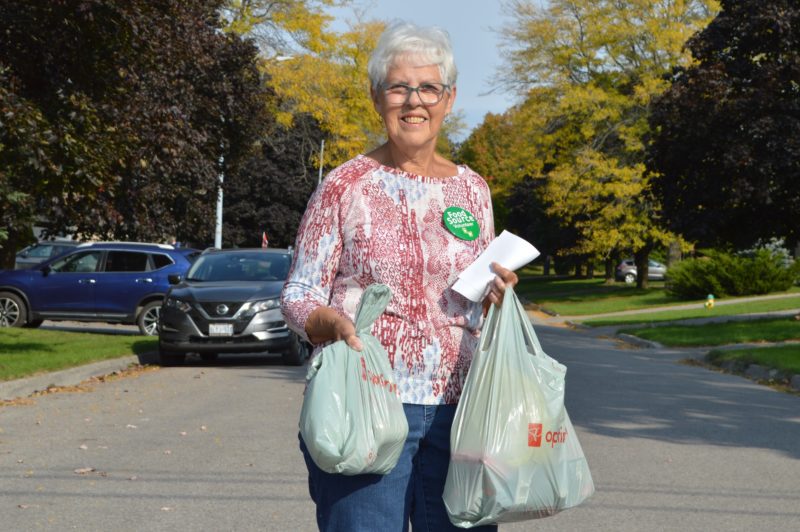“I had never used a foodbank until I retired and I found I couldn’t make ends meet with only what I received from Ottawa (pension). Using the food bank at the beginning of COVID was good for me because I didn’t want to go into stores and this saved me having to do that”
– Kawartha Lakes Food Source Visitor
As a proud member of Feed Ontario, Kawartha Lakes Food Source is made up of volunteers from across the City of Kawartha Lakes. Operating from a centralized distribution center, Kawartha Lakes Food Source collects food from reclamation sources, buys food in bulk, sorts and stores food, promotes awareness of hunger and its impact, and runs numerous fundraising events every year. With support from Feed Ontario, Kawartha Lakes Food Source maintains a central distribution center that provides food to organizations that support individuals who are facing hunger like school meal programs, breakfast clubs, food banks, and soup kitchens.
This month, Heather Kirby, Executive Director of Kawartha Lakes Food Source, sheds light on the faces of hunger in Kawartha and how food banks are adapting to meet growing need.
What is your name? Heather Kirby
What is the name of your food bank? Kawartha Lakes Food Source (we are a distribution center that supports 30+ agencies with food, and we own and operate our own food bank – Lindsay Community Food Market)
What is your role at your food bank? What does that entail? Executive Director. In my role I have oversight of Kawartha Lakes Food Source’s entire operations, including: five program staff, governance, fundraising, program development and implementation, our social enterprise, member relations, and communications
Why do you do what you do? I enjoy helping others and know that I truly make an impact on someone’s day when they have food for their family.
Tell us about your community and the factors that affect food bank use locally. Who uses food banks in your community? Our community has lost a lot of the manufacturing jobs over the last 20 years. This area has slowly become a retirement/cottage destination. While this is great to bring these audiences to our community, the jobs to support these audiences are typically low paying, service based and don’t include many mid-level positions. Locally, our visitors range from seniors on a fixed income to working single parents who just can’t make ends meet.
How many people do you serve? On average, our foodbanks serve 1,000 per month
How has your Food Bank adapted and created innovative solutions in response to the effects of COVID-19? We encouraged our members, and adapted ourselves, to home delivery to food bank visitors during COVID-19. Additionally, we strongly encouraged our members to develop and follow a thorough succession plan.
What trends are you noticing in this existing climate? Each month, we see many new visitors accessing our services for the first time. In the past, we did not experience this many new visitors.
Why do you believe the work of food banks is so important? Our work is so important because it supports those who sometimes do not have enough to have a meal, and helps them make it through their day a little bit easier.
What is something you wished people knew about poverty/food banks? It is very hard to knock on the door of a food bank and ask for help. There is a sense of pride in everyone and we all want/need to take care of our family, not just those who live above the poverty line.
